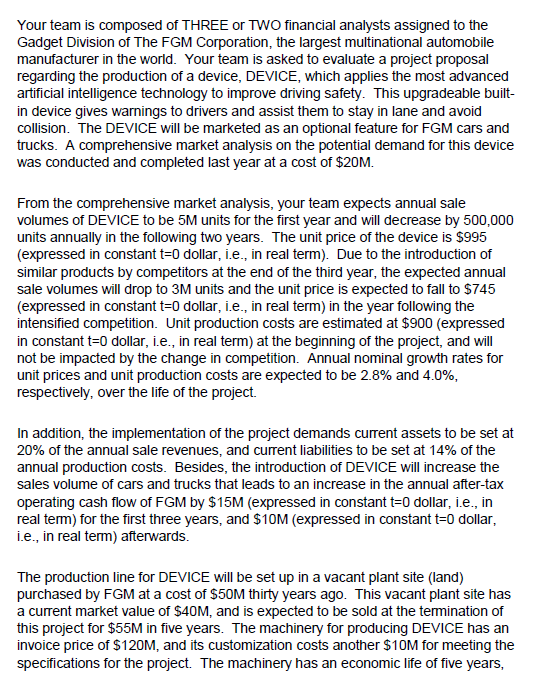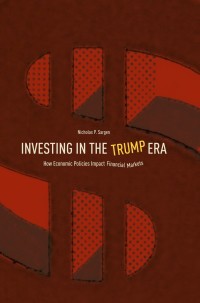

Your team is composed of THREE or TWO financial analysts assigned to the Gadget Division of The FGM Corporation, the largest multinational automobile manufacturer in the world. Your team is asked to evaluate a project proposal regarding the production of a device, DEVICE, which applies the most advanced artificial intelligence technology to improve driving safety. This upgradeable built in device gives warnings to drivers and assist them to stay in lane and avoid collision. The DEVICE will be marketed as an optional feature for FGM cars and trucks. A comprehensive market analysis on the potential demand for this device was conducted and completed last year at a cost of $20M From the comprehensive market analysis, your team expects annual sale volumes of DEVICE to be 5M units for the first year and will decrease by 500,000 units annually in the following two years. The unit price of the device is $995 (expressed in constant t-0 dollar, i.e., in real term). Due to the introduction of similar products by competitors at the end of the third year, the expected annual sale volumes will drop to 3M units and the unit price is expected to fall to $745 (expressed in constant t-0 dollar, i.e., in real term) in the year following the intensified competition. Unit production costs are estimated at $900 (expressed in constant t=0 dollar, ie., in real term) at the beginning of the project, and will not be impacted by the change in competition. Annual nominal growth rates for unit prices and unit production costs are expected to be 2.8% and 4.0% respectively, over the life of the project. In addition, the implementation of the project demands current assets to be set at 20% of the annual sale revenues, and current liabilities to be set at 14% of the annual production costs. Besides, the introduction of DEVICE will increase the sales volume of cars and trucks that leads to an increase in the annual after-tax operating cash flow of FGM by $15M (expressed in constant t-0 dollar, i.e., in real term) for the first three years, and $10M (expressed in constant t-0 dollar i.e., in real term) afterwards. The production line for DEVICE will be set up in a vacant plant site (land) purchased by FGM at a cost of $50M thirty years ago. This vacant plant site has a current market value of $40M, and is expected to be sold at the termination of this project for $55M in five years. The machinery for producing DEVICE has an invoice price of $120M, and its customization costs another $10M for meeting the specifications for the project. The machinery has an economic life of five years, and is classified in the MACR 5-year asset class for depreciation purpose. The sale price of the machinery at the termination of the project is expected to be 15% of its initial invoice price The corporate handbook of The FGM Corporation states that corporate overhead costs should be reflected in project analyses at the rate of 5% of the book value of assets. Corporate overhead costs are not expected to change with the acceptance of this project. However, financial analysts at the Headquarters believe that every project should bear its fair share of the corporate overhead burden. On the other hand, the Director of the Gadget Division disagrees to this view and believes that the corporate overhead costs should be left out of the analysis The (nominal) discount rate for the project is assumed to be 15%, compounded monthly. The marginal tax rate of The FGM Corporation is 21%. And any tax loss from this project can be used to write off taxable income of The FGM Corporation. The general inflation rate is 3.5% Question 1: A. In light of the appropriate objective of a firm, what would be your recommendation on the DEVICE Project basing on the (base) scenario described above? Why? B. Would your recommendation be changed if the unit price of DEVICE only falls to $790 (expressed in constant t-0 dollar, i.e., in real term) upon the entrance of competitive products after three years into this project, i.e., the optimistic scenario? What would be your recommendation if the unit price falls to $660 (expressed in constant t=0 dollar, i.e., in real term) after three years, i.e., the pessimistic scenario? Why? C. What would be your recommendation on the Project if there is 70% chance that the base scenario (as described in the introductory section) will occur, 20% chance that the optimistic scenario (as described in QIB above) will occur, and 10% chance that the pessimistic scenario (as described in Q1B above) will occur? Why








